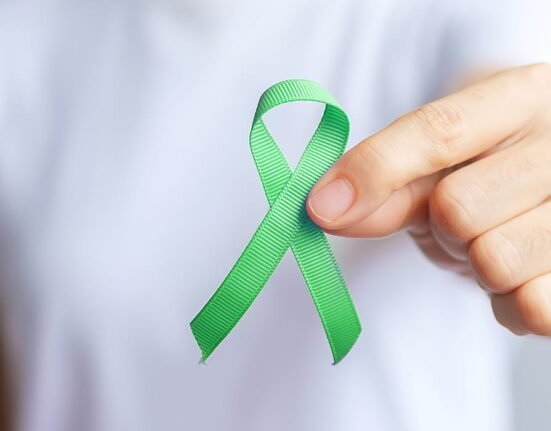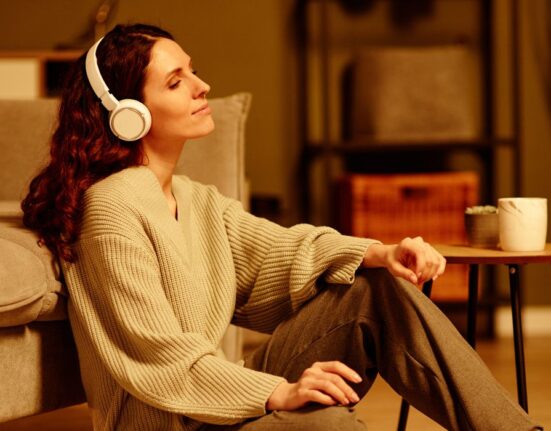Ever feel depleted following certain conversations, but restored after others? It’s not accidental; it’s the subtle art of boundaries. Picture boundaries as invisible lines that clearly establish where you begin and where the other individual ends. Physical space is certainly involved, yet boundaries also encompass your emotions, energy, and your own threshold. Drawing these lines is necessary to establish respect for one another and to keep your own sanity. By articulating clearly what you need, you create healthier and more positive relationships.
Boundaries also exist in a variety of shapes and sizes, for example, the space that you require around yourself, the emotional intimacy that you allow, and the activity that you expect from people. Boundaries ensure that you feel safe, preventing you from feeling suffocated or intruded upon. As per tavahealth.com (2024), it can seem daunting to stand up for your needs initially, but it ends up making the relationships that you hold with people stronger.
Read More: Empower Yourself: The Art of Setting Boundaries in Everyday Life
Social Apathy and Withdrawal: Emotional Disengagement
Occasionally, our feelings are warped and turn our actions toward withdrawal from others. Apathy is essentially a deep sense of not caring or wanting to connect, tending to result in long periods of isolation. We may withdraw to avoid uncomfortable situations, mistakenly thinking it will help ease pain. It typically stems from fear—fear of being judged, fear of being rejected—so any effort to connect becomes impossible to imagine.
Low self-esteem frequently creates this loop because psychological illness can make individuals feel unworthy of love and, consequently, pull away from others. This pattern is particularly present in individuals with eating disorders, wherein guilt and shame push them away from the same people who could potentially offer them comfort (Acute.org, 2023). Detachment is sometimes a useful coping tool for stress, but too much detachment is not.
Fear and Boundary Setting: Psychological Barriers
Fear is an unbridgeable part of boundary setting, which can propel us forward or entrap us. We all struggle to set boundaries since we fear rejection or conflict. Our past experiences leave us with an ache that doesn’t go away. You could end up building walls so tall if you were ever criticised or disapproved of, that you end up pushing people away unknowingly.
Anxious concern for others’ opinions, too, can lead to withdrawal. We do not want to be ourselves and risk being rejected. Always being on guard is utterly exhausting, and in many cases, this leads to emotional remoteness and isolation.
Control of your own space is most critical. Boundary-setting that is ignored, Noor et al. (2025) say, always leads to a feeling of suffocation and frustration. Knowing the critical importance of boundaries to emotional well-being is the first valuable step. But when boundaries are established in fear and not genuine self-knowledge, they are not good boundaries, but barriers.
Emotional Regulation: Strategies for Well-being
Emotional detachment is the key to personal balance. The majority of individuals use emotional detachment as a means of coping with excessive emotions. Practised as self-care, it keeps you detached from excess stress but still attached to emotions. Betterup.com (2025) notes its capacity to facilitate rational decision-making and enhance overall well-being.
However, when subjected to pressures that are too strong, this leads to apathy and social isolation. Theories of emotional regulation emphasise the necessity to adjust one’s emotions to increase resilience. A lack of effective regulation of emotions is likely to contribute to loneliness as it generates a sense of isolation and aversion to tight relationships.
1. The Role of Self-Compassion
Self-compassion is also a vital aspect here. It refers to being compassionate towards yourself during times of stress, accepting and affirming your emotional needs. Wu et al. (2023) discovered that greater self-compassion reduces emotional exhaustion and can even serve as a buffer for depression as a result of loneliness. Having access to supportive others is the absolute key to improving emotional regulation and avoiding loneliness.
Solitude and Cultural Context: Varying Perceptions
Culture deeply influences our relationship experience. Most cultures innately treasure social bonds, since human nature naturally craves connection. Yet, how these bonds are cultivated differs culturally. In collectivist societies, group connections tend to transcend individual boundaries, and a high respect for personal space may even be viewed as selfish (thesupportivecare.com, 2025).
Isolation can also lead to a reassessment of what matters socially. You might start valuing quality over quantity (“How to Reconnect with Others After a Period of Isolation,” 2025). This reflects the broader societal shift toward rich, substantial relationships instead of big, superficial social circles. As society continues to evolve, so will our collective concepts of connection and isolation.
Social isolation is not just a personal issue; it is now a major public health problem that affects both the quality of life and the longevity of individuals across all ages (WHO, 2025). It is crucial for understanding these sensitive cultural nuances to address effectively the greater social problem of isolation within our communities.
Read More: Why boundaries are not Selfish
Indicators of Apathy: Knowing the Warning Signs
One of the most notable signs of apathy is a seen pull-back tendency. The phone isn’t picked up. Texts aren’t returned. Things you once liked doing are now being avoided easily. You simply don’t care about connections anymore, choosing isolation instead. Runkle (2019) saw less subtle signs: ignoring door knocks, or leaving social gatherings early. It’s a creeping, insidious withdrawal. Another telltale sign is a reduced ability to express emotion. When you’re numb, it becomes very hard to be yourself or interact with others, resulting in an intensifying cycle of isolation.
Changes in your daily routine may also signal a lack of interest. Self-care routines fail. Bathtime and eating habits go the way of the board as motivation falters. Nangle (2023) warned that undesirable habits tend to overtake good me time, leaving you drained rather than refreshed. And of course, there’s the overwhelming guilt—the suffocating feeling of being a burden. This tends to make you want to withdraw even more. Breaking this noxious cycle requires deliberate, conscious effort.
Read More: Simple Self-Care Habits That Boost Your Mental Health
Emotional Signals: The Path to Self-Awareness
Picking up on subtle emotional signals is a key to knowing whether you are establishing healthy boundaries or subtly pushing yourself away. One of the indicators is the chronic feeling of emptiness or detachment, frequently tied to emotional detachment or emotional numbing. You might find yourself pulling away from activities you once enjoyed, with a growing lack of interest.
An increasing reliance upon rationality to the detriment of feeling can badly hamper your expression of emotion or capacity to actually understand others, creating emotional barriers. Stuffing down feelings can become bodily: a disease brought on by stress or chronic fatigue. Guilt only worsens it, too, because feeling inadequate will keep you from attending social functions to “protect” other people from your own inadequacies (Acute.org, 2023).
Steering clear of messages or early party exit are typically unconscious withdrawals, unlike working at setting boundaries, as Runkle (2019) indicated. Reading these significant cues grants you the authority to recreate vital connections and make a big difference to your overall well-being.
Personal Space Respect: Communication and Balance
1. Strategic Communication of Needs
Clear communication is the very bedrock of healthy relationships and firm boundaries. Start by specifying your needs. Then, specify them clearly and specifically. Plain language is strongest; e.g., “I need some alone time to recharge.” There is no room for misinterpretation, and other people will be aware of and respect your limits. Active listening is also crucial for mutual understanding and open communication. Engage in honest conversation and settle disputes openly, in advance, before they spiral out of control. Explain the grounds for your boundaries—connecting solitude with self-care, for instance, brings about empathy (Betterup.com, 2025).
Know your emotional hot buttons; this allows you to express your needs without selling out your emotional health. And check in with yourself and others regularly to ensure that those boundaries are holding up for everybody. Respect and unqualified support: that’s the big goal.
Read More: Boundaries in Neurodivergent Relationships: Why They Matter
2. Optimal Solitude and Sociability
Achieving that wonderful balance between being alone and being social is central to emotional well-being and a sense of satisfaction. Begin by profoundly understanding your own needs and limits. Set a specific time for contemplation. But also, intentionally schedule time for socialising that truly invigorates you, not merely serves as an obligation. This forward thinking prevents the slippery slope of healthy boundaries to isolation from occurring—a miscalculation when too much alone time is the result of social interaction being left behind.
Open communication is key here, too. Inform friends and family about your need for alone time. This builds understanding and respect, ensuring social events don’t overwhelm you. Never feel guilty about needing a break; personal space is vital for mental clarity. Noor et al. (2025) observed that honouring individual boundaries significantly boosts emotional health, reduces conflict, and ultimately strengthens relationships.
Consider doing things that naturally respect boundaries: quiet nights out, shared activities where you’ve got space to breathe. You can be close without being invaded. Harmony is the aim: alone time and friendship combined. This balance allows you the liberty to truly thrive.
Cultivating Rich Relationships: Purposeful Strategies
1. Planning Social Interactions
Intentional social engagement begins with acknowledging your needs, particularly after isolation. Begin by checking your social priorities. Consider the relationships that supported you in the past. What kind of connections do you really need now? Perhaps it’s reconnecting with old friends or forming new friendships that are compatible with your present self (“How to Reconnect with Others After a Period of Isolation,” 2025).
Plan activities that are similar in comfort level to your regular interactions. Close-tie activities in the comforts of your home will reduce anxiety. Group activities, such as cooking classes or book clubs, allow interaction while naturally adapting to your personal space. Technology can also be a friendly ally. Friend-finding apps, for instance, can make it more convenient without taking up your space. As Thesupportivecare.com (2025) warns, such sites allow you to delineate the type of interactions that you want, so it is easier to create deeper connections without encroaching on your space.
Prioritise quantity over mere quality. Don’t over-program. Instead, choose a very few interactions that deeply resonate with your core values. This anticipatory action avoids burnout while creating deeper, more meaningful relationships.
2. Shared Activities with Respectful Space
Shared activities that honour boundaries naturally build relationships and a sense of community. Having open, honest discussions about what you like and your boundaries first is a good step. When planning a group event, talk about comfort levels and the duration you want to attend. This prior discussion makes everyone more comfortable and appreciated.
Choose activities that naturally respect personal space. Low-pressure environments, in which it is no big deal to just walk away if you want to, always lead to more favourable experiences. Hiking, painting, and book clubs engage you socially without placing heavy demands. Thesupportivecare.com (2025) recommends taking a closer look at your social needs during these times to identify what truly rejuvenates you while safeguarding your emotional health.
Make a conscious social plan based on shared interests. This method builds connections without overburdening anyone. Think group assignments or volunteer work—these satisfy social needs while simultaneously providing a sense of purpose. Be flexible on an individual level; this builds respect and comprehension in the relationship.
Dynamic Equilibrium: Blending Boundaries and Connection
Balance is first. Maintaining healthy boundaries and having healthy relationships are both key to emotional well-being. Personal boundaries essentially protect your autonomy, which means less anxiety, less depression, and more effective relationships (thesupportivecare.com, 2025). Ironically, boundaries can then also, though unintentionally, create isolation. Conversely, inadequate personal space can cause enormous emotional anguish and shatter trust, according to Noor et al. (2025).
The ongoing challenge is how to work through these forces and still fulfil our basic human need to connect. Real conversations about our needs generate understanding and enable us to communicate without shame. Taking the time to reflect helps us become aware when we are slipping into complacency or disconnection. Building self-awareness actively protects your emotional health as it builds strong relationships.
Read More: Feeling Shame Is Not Good for Your Mental Health?
Reflecting on Personal Needs
This balance takes conscious, persistent effort. Developing relationships that truly honour your boundaries allows for self-growth and increases each interaction. Commit to working with yourself and others. This is the solid ground for healthier relationships, relationships that really respect individual needs and successfully keep loneliness at bay.
In this, to truly honour your needs in addition to establishing relationships, the mindful practice of reflection is essential. Make regular time for introspection about your emotional place. Observe where your boundaries and connections overlap. Ask yourself: What am I really seeking in relationships? Are my boundary-setting habits presently working to achieve that? Your introspection can illuminate cycles of causing unnecessary space or emotional disconnection (Betterup.com, 2025), in which emotional disconnection might be a byproduct of stress or avoidance.
It is important to learn to differentiate between healthy emotional management and destructive detachment. Practice perpetual internal dialogue about your feelings, especially when relationships become challenging. “How to Set Healthy Boundaries to Reduce Stress” (2025) reminds us: setting boundaries is not a one-and-done affair. You must check them periodically as life evolves and you grow.
Also, engage in open dialogue with people you trust about what you have gone through. This is how empathy is created and pushes a helpful society. Tavahealth.com (2024) emphasises that open communication of your needs prevents emotional exhaustion and fosters respect between people. Ultimately, this exercise of self-reflection prepares you to communicate your needs assertively, thereby improving interactions while not jeopardising your inner tranquillity or overall well-being.
FAQs
1. What exactly are personal boundaries?
They’re your invisible lines defining physical, emotional, and psychological limits. They protect your well-being and build respect in relationships. Simple.
2. How does fear impact setting boundaries?
Fear of rejection or confrontation often stops us. It can lead to walls instead of healthy limits, hindering true connection.
3. Can too much emotional detachment be bad?
Yes. While it helps cope with stress, excessive detachment can cause apathy, social withdrawal, and hinder genuine connection. Balance is key.
4. What are common signs that I’m isolating myself too much?
Avoiding social interactions, diminished emotional expression, and declining self-care habits are major red flags. Look out for them.
5. How do I balance alone time with social interaction?
Be aware of your needs. Schedule both self-reflection and enriching social interactions. Communicate your preferences clearly to others. It’s about harmony.
References +
Emotional Detachment: When It’s Healthy And When It’s Toxic. (2025). https://www.betterup.com/blog/emotional-detachment
Setting Healthy Boundaries in Personal and Professional Relationships. (2024). https://www.tavahealth.com/resources/setting-boundaries-personal-professional-relationships
Sadaf Noor, Farah Ali, Rebecca Phipps, Jim Hughes, Haqqani. (2025). Why is Personal Space Important? A Guide to Personal Boundaries. https://faithbehavioralhealth.com/why-is-personal-space-important/
Self-Isolation to Self-Love: Relationships & Eating Disorders. (2023). https://www.acute.org/resources/relationships-eating-disorders
Qinglu Wu, Tengfei Qi, Jun Wei, Amy Shaw. (2023). Relationship between psychological detachment from work and depressive symptoms: indirect role of emotional exhaustion and moderating role of self-compassion. https://link.springer.com/article/10.1186/s40359-023-01384-z
How to Set Healthy Boundaries to Reduce Stress. (2025). https://www.thesupportivecare.com/blog/how-to-set-healthy-boundaries-to-reduce-stress
How to Reconnect with Others After a Period of Isolation. (2025). https://www.thesupportivecare.com/blog/how-to-reconnect-with-others-after-a-period-of-isolation
Anna Runkle. (2019). CPTSD: Do You Isolate Because It’s Hard to Hold Boundaries?. https://www.pacesconnection.com/blog/cptsd-do-you-isolate-because-it-s-hard-to-hold-boundaries
Demographic Change and Healthy Ageing – Social Isolation and . (2025). https://www.who.int/teams/social-determinants-of-health/demographic-change-and-healthy-ageing/social-isolation-and-loneliness
Barb Nangle. (2023). How to Understand the Difference Between Isolation and Healthy Alone Time and Why It’s Important. https://www.linkedin.com/pulse/how-understand-difference-between-isolation-healthy-alone-barb-nangle
Debra Umberson, Jennifer Karas Montez. (2010). Social Relationships and Health: A Flashpoint for Health Policy. https://pmc.ncbi.nlm.nih.gov/articles/PMC3150158/
Setting Healthy Boundaries in Relationships. (2025). https://www.helpguide.org/relationships/social-connection/setting-healthy-boundaries-in-relationships
Unpredictable Social Equilibrium. (2025). https://lifestyle.sustainability-directory.com/term/psycho-social-equilibrium/













Leave feedback about this